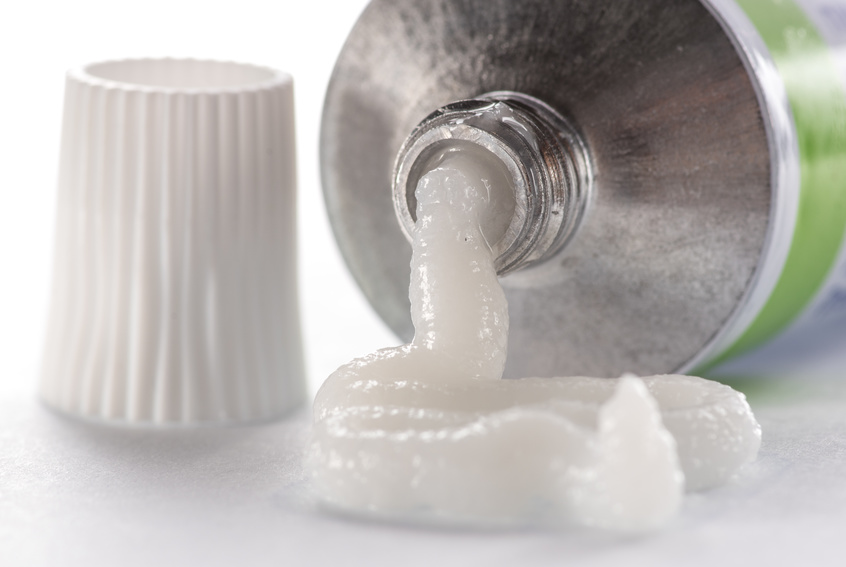Study finds an association between topical corticosteroid use and new-onset type 2 diabetes
There is a positive and significant association between exposure to topical corticosteroids and new-onset type 2 diabetes (T2D), according to three large pharmaco-epidemiological studies based on data from Denmark and U.K. The findings are published online April 1 2019, in Diabetes Care.
Topical corticosteroids (TCSs) are widely used to treat chronic inflammatory and pruritic skin conditions such as psoriasis and eczema due to their efficacy, moderate costs, and relatively good safety profile. However, TCSs are small molecules that can get absorbed into the skin and ultimately reach the systemic circulation and cause internal exposure. Although TCS package inserts describe hyperglycemia and glycosuria as adverse drug reactions, it is unclear whether their use in real life is also associated with an increased risk of type 2diabetes.
The study was designed to assess whether TCS use in real-world settings is associated with an increased risk for T2D. A total of 115,218 and 54,944 adults were identified as case subjects with new-onset T2D in the Danish and U.K. case-control study, respectively. For the Danish cohort study, 2,689,473 adults were included. The main exposure was TCSs, and the outcome was incident T2D.
The findings showed that TCS use was significantly associated with T2D in the Danish (adjusted odds ratio [OR] 1.35 [95% CI 1.33–1.38]) and U.K. (adjusted OR 1.23 [95% CI 1.19–1.27]) case-control studies. Individuals who were exposed to TCSs had significantly increased risk of incident T2D (adjusted hazard ratio 1.27 [95% CI 1.26–1.29]). Significant dose-response relationships between T2D and increasing potency of TCSs were observed in the two Danish studies.
The authors concluded that clinicians should be cognizant of diabetogenic effects of high-potency topical corticosteroids and consider other treatment options if possible.
Source: Diabetes Care. Abstract/Full Text available here https://doi.org/10.2337/dc18-2158 (Subscription may be required)
Footnote: Below is an excerpt from our earlier publication on “Therapeutic Analysis of Topical Corticosteroids & their Combination Products Available in the Nigerian Market ”
Comparison of topical corticosteroids
Ultra-high and High Potency TCS
Recommended for thick skin areas like Palm and Soles for: Atopic dermatitis (resistant); Discoid lupus; Hyperkeratotic eczema; Lichen planus; Lichen sclerosus (skin); Psoriasis; Severe hand eczema.
High-potency may also be used on the Trunk, Extremities, Scalp & Hairy skin areas for: Scalp dermatitis; Atopic dermatitis; Psoriasis, etc.
They pose the highest risk of systemic side effects. Avoid abrupt discontinuation; continuous daily use >3 weeks, and occlusive dressings.
Monitor for symptoms of adrenal suppression: weakness, weight loss, hypotension, and gastrointestinal distress.
Lower potency agents are preferred for the face, groin, armpits, or skin folds due to susceptibility to local side effects and systemic absorption
Ultra-high potency includes: Betamethasone dipropionate glycol (augmented) 0.05% Cream, Ointment, Lotion; Clobetasol 17-propionate 0.05% Cream, Ointment, Lotion; Halobetasol propionate 0.05% Ointment.
High potency includes: Amcinonide 0.1% Ointment, Cream, Lotion; Betamethasone dipropionate 0.05% Ointment, Cream, Lotion; Betamethasone valerate 0.1% Ointment; Fluocinonide 0.05% Cream, Ointment, Gel; Halobetasol propionate 0.05% Cream; Mometasone furoate 0.1% Ointment.
Moderate Potency TCS
Recommended for Trunk, Extremities, Scalp & Hairy skin areas for: Alopecia areata; Atopic dermatitis; Contact dermatitis (severe); Lichen sclerosus (vulva); Nummular eczema; Perianal inflammation (severe); Scabies (after scabicide); Seborrheic dermatitis; Severe dermatitis; Severe intertrigo (short-term); Stasis dermatitis.
Moderate to low potency agents should be used when treatment involves large body surface area.
Duration of treatment: May be used for up to 3 months when treating non-facial or non-intertriginous areas.
Occlusive dressings should be avoided.
Low Potency TCS
Recommended for thin skin areas like Face, Neck, Intertriginous or Genital areas for: Dermatitis (face, eyelids, diaper region); Intertrigo; Perianal inflammation.
These are agents of choice for children, pregnant women, elderly or for treating large areas.
Available TCS Combinations with Antibiotics
- Betamethasone + Neomycin (Topical)
- Hydrocortisone + Gentamicin (Topical)
- Hydrocortisone + Neomycin (Topical)
Available TCS Combinations with Antifungals
- Beclometasone + Clotrimazole
- Betamethasone + Clotrimazole
- Clobetasol + Clotrimazole
- Dexamethasone + Clotrimazole
- Diflucortolone + Isoconazole
- Hydrocortisone + Miconazole (Topical)
Available TCS Combinations with Antibiotics and Antifungals
- Beclometasone + Clotrimazole + Gentamicin
- Beclometasone + Clotrimazole + Gentamicin + Clioquinol
- Betamethasone + Clotrimazole + Gentamicin
- Betamethasone + Clotrimazole + Neomycin
- Betamethasone + Tolnaftate + Gentamicin
- Betamethasone + Tolnaftate + Gentamicin + Clioquinol
- Betamethasone + Tolnaftate + Neomycin + Clioquinol
- Clobetasol + Ketoconazole + Neomycin
- Clobetasol + Miconazole + Gentamicin
- Clobetasone + Miconazole + Gentamicin
- Dexamethasone + Clotrimazole + Gentamicin
- Dexamethasone + Clotrimazole + Neomycin
- Dexamethasone + Miconazole + Neomycin
- Fluocinolone + Miconazole + Neomycin
- Miconazole + Beclometasone + Neomycin
- Miconazole + Clobetasol + Neomycin
- Triamcinolone + Econazole + Gentamicin

